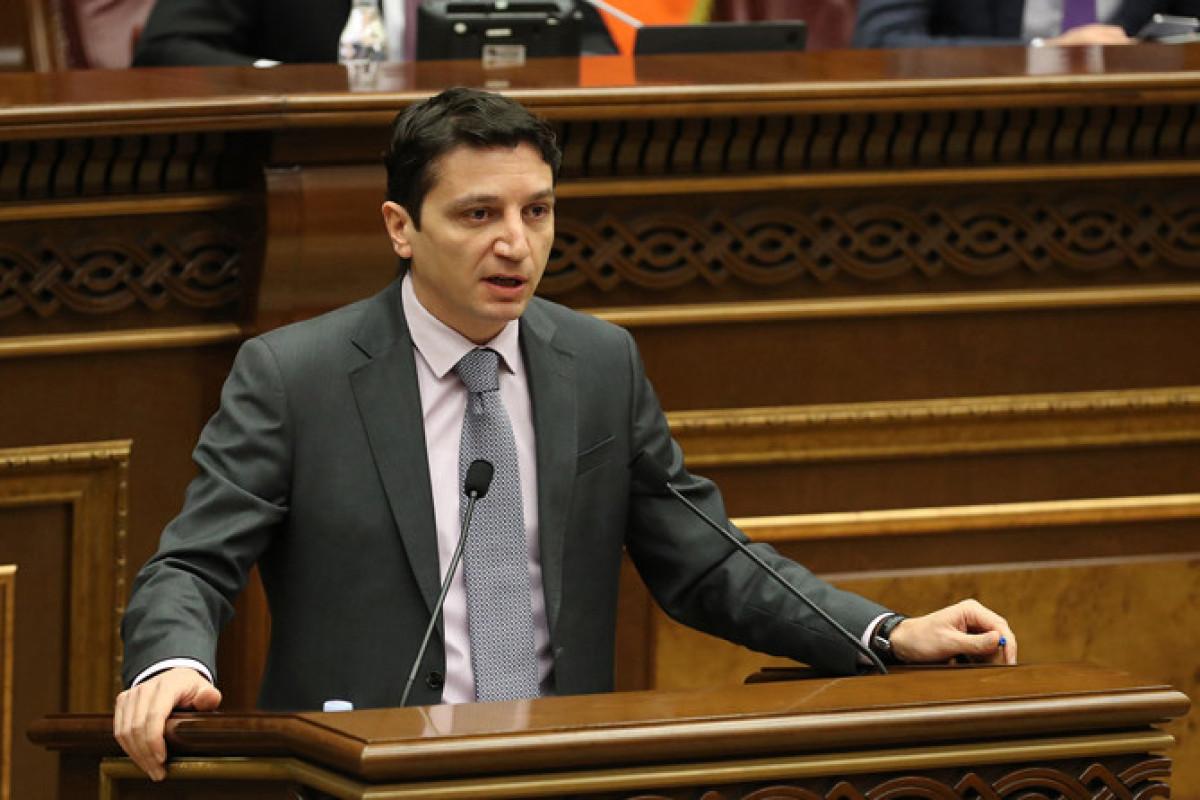Relocants, re-export unmask Armenia's economic weaknesses "R" conundrum
The significant dependence of the Armenian economy on trade and economic ties with Russia, particularly through the re-export of sub-sanctioned products and the provision of banking and intermediary services, has been a subject of discussion among experts for some time.
On May 31, this dependence is openly acknowledged by the government of the “country of stones”. During parliamentary hearings on the implementation of the 2023 state budget, Armenian Finance Minister Vahe Hovhannisyan reported a substantial volume of re-exports from Armenia to Russia. Despite the apparent growth in Armenia's GDP driven by these speculative activities, there are serious long-term threats to the country's domestic production. This reliance reduces the competitiveness of Armenia's industry and agriculture, posing a significant risk to the sustainability of its economic growth.
“In 2023, re-exports from Armenia to Russia grew by 76.8 per cent, while exports of Armenian-made goods grew by 7.5 per cent. Government representatives have never disclosed such data before - even in percentage terms,” Armenian Finance Minister Vahe Hovhannisyan said, speaking at a joint session of the parliamentary standing committees in the National Assembly. According to the finance minister, the volume of exports from Armenia to the Russian Federation reached about $3.419 billion last year.

It is appropriate to recall here that the re-export factor has become a very large item in Armenian-Russian foreign trade relations since 2022 in the context of the aggravation of the Russia-Ukraine conflict and the imposition of anti-Russian sanctions by the collective West. Against this background, Armenian intermediaries, including forwarding and transportation companies, have been massively ordering consumer electronics and electrical appliances, machine tools and industrial equipment, and various components in the EU, the USA, Southeast Asia, and the UAE. Most of the commodity groups listed above belong to dual-use products, and these goods, in fact, were reloaded onto trailers bound for Russia without unpacking the containers after clearance at the Armenian customs with new consignment documents.
It is noteworthy that after the war broke out in Ukraine, Armenia's trade with the Eurasian Economic Union (EAEU) countries increased more than fivefold, mainly due to substantial re-exports of equipment. In particular, Armenian re-exports of equipment to sanctioned Belarus increased sevenfold, from $3 million to almost $27 million. In turn, Armenia's exports (mostly equipment) with Kyrgyzstan increased sharply compared to 2015, almost 80-fold.
Overall, according to last year's Fitch Ratings report, supplies of goods from Armenia to Russia have increased by 300 per cent since 2021. Last year, the share of Armenian re-exports in the total volume of supplies increased by 80.6 per cent, while the domestic production of Armenian manufacturers increased by only 4.4 per cent. It is quite obvious that the industrial production of the stagnating economy of the “country of stones” is not able to provide such a significant volume of supplies on its own, not to mention agriculture, which has been declining for the third year in a row. Between 2022 and 2023, there was a massive participation of Armenian banks and other financial structures in providing intermediary services to Russian companies and other residents, making bank payments to circumvent sanctions.
However, due to unambiguous pressure from the West, Yerevan has been forced to somewhat limit the intensity of questionable financial transactions to circumvent sanctions since the end of 2023.
Another important revenue item of the “apricot” republic was the reception of Russian re-locations and the provision of tourist services. “In 2023, some 2.317 million tourists visited Armenia with an increase of 39 per cent against the previous year's figures,” Finance Minister Vahe Hovhannisyan said, addressing the parliament. However, according to some Armenian experts, the speculative effect associated with the influx of re-locations did not support the development of the real sector of the economy. On the contrary, it has only led to an increase in prices for renting apartments, hotels, transportation and other services, as well as prices in catering and trade networks. Profits from tourism are deposited in niche segments of the economy, while ordinary citizens of Armenia suffer from rising prices: for example, last year only flight prices to Armenia rose by 30 per cent.
“The 9.2 per cent GDP growth in Armenia in the first quarter of 2024 published by the statistics committee was obtained as a result of incorrect calculation this figure is around 6 per cent,” director of the Armenian Center for Socio-Economic Studies (ACSES), economist Haykaz Fanyan says.
According to the expert, the highest growth - 31.1 per cent - according to statistics committee data was recorded in the manufacturing industry, but such growth in this sphere is mainly due to the re-export of jewellery. “And the jewellery sector is dominated by re-export transactions, with the source materials being virtually unprocessed. The VAT calculation completes this picture: if we exclude the effect of the jewellery industry, the growth is likely to be about 6 per cent,” the ACSES head stressed. It is appropriate to recall that in 2023, Armenia exported $1.8 billion worth of gold and $589 million worth of polished diamonds it was due to these indicators that the volume of Armenian total exports increased by 55 per cent in 2023. The main export destinations are the United Arab Emirates and Hong Kong (PRC), while the country of origin of gold and diamonds is Russia.
And what is happening in the real sector of Armenia's economy, unaffected by the factor of re-export speculation and the influx of tourists? According to official statistics, in the first quarter of 2024, there was a five per cent decline in the mining industry, once the “locomotive” of the Armenian economy. The revenues in the sphere of communication and information decreased by 3.2 per cent, and in the line “Public administration and defence: compulsory social insurance” there was a collapse of 13.2 per cent. The situation is tragic in the sphere of agriculture of the “apricot” republic: in 2021, this sector registered a 1.1 per cent decline to 933 billion drams zero indicators were observed in 2022, and stagnation continued in 2023, when the gross output of the agricultural sector decreased by 0.3 per cent year-on-year, amounting to 948 billion drams.
There was no noticeable growth in the agrarian industry of Armenia this year, but according to Armenian statistics, exports to the Russian market from January 1 to April 20, 2024, amounted to 20.8 thousand tons of agricultural products, which exceeds the figure of the same period last year by 1.9 times. How is it possible? Judging by the information of several Armenian media, the speculative factor of overbuying in third countries is probably not excluded here either. To recall, in the past Armenian businesses have already been engaged in repackaging Iranian dairy products, cream, and butter with subsequent delivery to the Russian Federation. As a result, in April last year, the Federal Service for Veterinary and Phytosanitary Supervision (Rosselkhoznadzor) imposed a ban on the import and sale of all dairy products produced in Armenia on the Russian market.

Most international and Armenian experts believe that the effect of speculative growth of the Armenian GDP depends entirely on re-export operations with the EAEU countries, and in the event of a change in the external conjuncture on the track of relations between the West and Russia, Armenia may lightning lose all its trade advantages, which will result in an avalanche-like collapse of the economy. As a result, the dry residue of the short-term currency rain, which irrigated the meagre pastures of the “country of stones”, left only future inflation risks, forced weakening of the national currency (dram), growing public debt, budget deficit, etc. However, even today, against the background of a tangible inflow of foreign currency, which strengthened the exchange rate of the dram against the dollar, Armenia is experiencing the development of the classic “Dutch disease”, when imports are cheaper than domestic relatively expensive production, depriving the latter of any prospects for growth.
“Speaking frankly, the Armenian economy has ceded its former positions and in the sphere of IT technologies, Belarus, Russia and Kazakhstan have long since pulled ahead. Armenia today, to put it mildly, does not shine in terms of business efficiency, we are not competitive in any sector, today by this indicator we are below zero - in minus. In this sense, we now have a vacuum and uncertainty, which is the most serious threat to economic security,” Tatul Manaseryan, head of the Alternative Research Center, said recently. According to the expert, the main drivers of growth are again re-exports and re-locations, and if these factors do not work, there will be a serious downturn in Armenia's economy.








